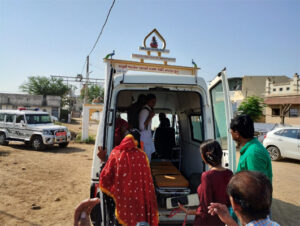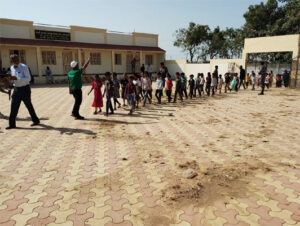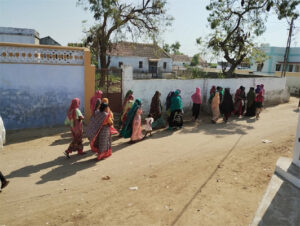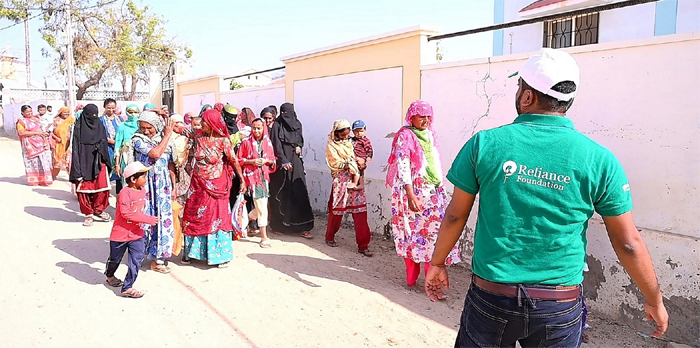- GSDMA, INCOIS, Kachchh administration observe World Tsunami Awareness Day under UNESCO Tsunami-Ready Recognition Programme
- In all, 290 people, including 65 children and 25 elderly persons, present in the village at that time were evacuated
- The ultimate goal is to boost the coordination between government entities and local residents, enhancing the efficacy of real-time disaster responses.
NE NEWS SERVICE
ABDASA, GUJARAT, NOV 7
As the alarm rang around 9.40 am on Tuesday, there was a prepared calm in the village of Rapar Garh. Nestled along the Pingleshwar coastline, the residents rallied to align for a mock-evacuation, to take them a step closer to being certified ‘Tsunami-Ready’.

Observing World Tsunami Awareness Day while remembering the 2004 Indian Ocean tsunami, the Gujarat State Disaster Management Authority (GSDMA), the Kachchh district administration, INCOIS, Reliance Foundation and other agencies organised a mega mock tsunami exercise in Rapar Garh village, Kachchh. This was an effort to make the village tsunami-ready, as per the UNESCO Tsunami-Ready Recognition Programme.

Rapar Garh is vulnerable to cyclones, earthquakes and tsunamis and has witnessed drastic rainfall changes in recent times. As part of its disaster risk reduction efforts across India, Reliance Foundation worked with the last-mile stakeholders at the village, block and district-level, including the District Disaster Management Authority and the community to reduce disaster risk and enhance climate-resilience. Accordingly, Reliance Foundation conducted vulnerability assessments, helped the village strengthen its Village Disaster Management Plan (VDMP) and organised awareness programmes and preparedness activities.

During the tsunami preparedness exercises on Tuesday, villagers, who are near the Pingleshwar coastline, were evacuated to designated safe shelters. A mock alert was given by the Indian National Centre for Ocean Information Services (INCOIS) through GSDMA in the morning. The community was warned of a 9.03 magnitude simulated earthquake near Sumatra, Indonesia, expected to trigger a tsunami within the next 3 hours along India’s west coast. Evacuation route maps placed in key locations for easy visibility and access helped residents reach the shelters in a timely and planned manner. Incident Command Centre was set up as a co-ordination hub, near the village Panchayat Office.
Personnel of essential line departments, like police and health, were on standby to tackle emergencies while the marine police and fisheries department prevented fisherpersons from entering the waters. The district education officials and ANMs ensured that children were safely evacuated. In all, 290 people, including 65 children and 25 elderly persons, present in the village at that time were evacuated.
The mock exercises aim to enhance community resilience by strengthening coordination among government departments, community leaders, and residents, and improve the village disaster management plan. With practical implementation and periodic drills, the community will be better prepared to respond efficiently during real emergencies.
Reliance Foundation is working in close co-ordination with the government departments and nodal agencies along with communities, in several villages of Kachchh to raise preparedness for extreme events, strengthen response capacities, ensure last-mile delivery of life-saving information and make livelihoods climate-resilient. Reliance Foundation has supported over 21 million people through various disasters over the years, and is strengthening disaster resilience in eight states across India, driven by its commitment to empower vulnerable communities.









